Rane GQ 15 Handleiding
Rane
Mengpaneel
GQ 15
Bekijk gratis de handleiding van Rane GQ 15 (4 pagina’s), behorend tot de categorie Mengpaneel. Deze gids werd als nuttig beoordeeld door 9 mensen en kreeg gemiddeld 4.3 sterren uit 5 reviews. Heb je een vraag over Rane GQ 15 of wil je andere gebruikers van dit product iets vragen? Stel een vraag
Pagina 1/4

OPERATING / SERVICE MANUAL
GQ 15/30
QUICK START
This section is for all of us who hate to read manuals. For those of us who want to just do it. But this attitude inevitably gets
us into trouble. So in the interest of keeping you out of trouble, we present this abbreviated overview of your equalizer.
Please read at least this much. Thank you.
Hook-up is intuitive. Just follow the silkscreened instructions on the rear of the unit. All three Inputs are wired in parallel
(they do not sum); and all three Outputs are wired in parallel. Use any ONE Input and any or all Outputs. Using the GQ
15/GQ 30 in an Insert Loop of a mixer is extremely easy. Simply connect them together using a single stereo cable (1/4"
TRS) between the mixer’s Insert Loop and the GQ 15/GQ 30’s PATCH I/O jack. This jack is wired for the tip = send,
ring = return convention used by many mixer manufacturers. CAUTION: USE EITHER THE PATCH I/O OR THE
INPUT AND OUTPUT CONNECTORS — DO NOT USE BOTH.
Anyone familiar with other graphic equalizers finds the GQ 15/GQ 30 just as familiar.
Setting the IN and OUT GAIN controls to the same physical positions gives unity gain through the equalizer. That is,
moving both slider handles together (keeping them aligned) always maintains overall unity gain from input to output. Many
strange gain structure conditions may be handled with these controls. FOR BEST NOISE PERFORMANCE ALWAYS
POSITION BOTH CONTROLS AS FAR TOWARD THE TOP OF THE UNIT AS POSSIBLE WITHOUT LIGHTING
THE OL INDICATORS. See the Operating Instructions on the back page for more information. Setting curves is as easy as
it is on all Rane graphics thanks to our unique interpolating constant-Q circuitry. For more information on setting up your
curves correctly, again, see the back page.
Set the CUT FILTERS controls for the desired low and high cut frequencies. Sliding them fully downward essentially
defeats these functions.
NEVER CONNECT ANYTHING EXCEPT AN APPROVED RANE POWER SUPPLY TO THE RED THING THAT
LOOKS LIKE A TELEPHONE JACK ON THE REAR OF THE UNIT. This is an AC input and requires special attention
if you do not have a power supply EXACTLY like the one originally packed with your unit. See the full explanation of the
power supply requirements elsewhere in this manual.
continued
SYSTEM CONNECTION
When first connecting the GQ 15/GQ 30 to other components, LEAVE THE POWER SUPPLY FOR LAST. This gives
you a chance to make mistakes and correct them without damaging your fragile speakers, ears and nerves.
INPUTS. All three inputs are wired in parallel and are actively balanced (true instrumentation amplifiers). Each works
equally well. Choose strictly from a favorite hardware point-of-view, there will be no performance trade-offs. The wiring
convention adheres to American, British and International standards of pin 2, +, or tip being hot, pin 3, –, or ring being
return, and pin 1, COMMON GND, or sleeve being signal ground. Unbalanced operation involves using only pin 2, + , or
tip as signal and pin 1, COMMON GND, or sleeve as ground. It is not necessary to short any terminals or pins to any others.
Due to the true instrumentation nature of the inputs, there is no gain reduction if pin 3, or –, is left open; however, if pin 3
gets shorted, it won’t hurt anything either. Use pin 1, the shell, or the COMMON GND point on the barrier strip for shield
ground. (See Rane Note 110 for further information).

FRONT PANEL DESCRIPTION
1. MASTER OVERLOAD INDICATOR. This red OL LED monitors the input, output and all filter stages for excessive sig-
nal levels. It lights whenever these levels exceed 4 dB below clipping. Occasional flickering is normal; however, it should not
be allowed to light steadily.
2. OVERALL BYPASS SWITCH & INDICATOR This pushbutton switch activates the “hard-wire” bypass function.
When engaged (red BYPASS LED on), all three pins of the input connectors directly connect to the same pins on the out-
put connectors (hard-wired). Engaging this switch converts the GQ 15/GQ 30 into a relatively expensive patch cord, but one
with pretty lights.
3. INPUT AND OUTPUT GAIN CONTROLS. These slide controls set the relative IN and OUT gain structures. The range
of each control is ±12 dB; however, note they are labelled opposite to each other, i.e., the top of the IN control reads
+12 dB while the top of the OUT controls reads -12 dB. Configured this way, whenever they are held and moved together
the overall gain through the GQ 15/GQ 30 stays at unity. Positioning these controls (together) as far toward the top of the
panel as possible (without lighting the OL indicator) yields the best signal-to-noise performance.
4. LOW & HIGH CUT FILTER CONTROLS. These sliders set the corner frequency of the bandlimiting filters. The fre-
quencies shown represent the -3 dB points for each filter. When the sliders are located at their bottom positions, the filters
are at the lowest and highest extremes.
5. FILTER LEVEL CONTROLS. These slide controls set the individual levels of the interpolating constant-Q filters. The
45 mm travel allows excellent resolution for all settings. The grounded center-detent design of these sliders ensures all filters
are off when positioned to their centers.
6. POWER INDICATOR This yellow LED lights any time remote power is supplied from either a RS 1 single power supp-
ly or a RAP 10 multiple power supply. Note that this indicator is electrical, not political.
SYSTEM CONNECTION (continued)
OUTPUTS, The GQ 15’s outputs mimic the inputs. True balanced output interconnection only requires the use of pin 2,
+, or tip, and pin 3, –,
or ring for signal transmission. It does not require pin 1, or signal ground. The signal exists differen-
tially between the two balanced leads; ground is not involved. Ground is used only for shielding. Again, have a look at Rane
Note 110 for more detail.
EXPANDING. Expanding and/or daisychaining the inputs and outputs normally uses the 1/4" jacks. Three parallel input
connectors allows driving a second signal processor or amplifier without special cabling.
PATCH I/O. The PATCH I/O (Input/Output) jack makes connection to mixer Effects Loop insert points very simple. Just
connect a shielded stereo tip-ring-sleeve (TRS) cable between the GQ 15’s PATCH I/O jack and the TRS Effects Loop in-
sert on your console. (Your mixer must use the tip = send, ring = return Effects Loop wiring convention.)
SIGNAL LEVELS. The GQ 15 is designed for all line-level signals. Signal levels from -10 dBV to + 4 dBu or considered
normal and within range (at least 16 dB of headroom exists above these levels). Do not directly connect microphones into
the GQ 15. Use a mic preamp (e.g., Rane model MS 1) first.

REAR PANEL DESCRIPTION
9. Chassis Ground Point. A 6-32 threaded hole used for chassis grounding purposes. See the CHASSIS GROUNDING
note on the last page for details.
8. Remote Power Supply Input. The unit is supplied from the factory with a Model RS 1 Remote Power Supply suitable
for connection to this input jack. The power requirements of the unit call for an 18-24 volt AC center-tapped transformer
only.
THIS IS NOT A DC INPUT. IT IS NOT A TELEPHONE JACK
NEVER USE A POWER SUPPLY WITH YOUR UNIT OTHER THAN THE ONE SUPPLIED OR A REPLACE-
MENT APPROVED BY RANE CORPORATION. Using any other type of supply may damage the unit and void the war-
ranty.
7. GROUND LIFT Switch. This switch provides the ability to separate chassis ground and signal ground. Normally, this
switch should be in the LIFT position. In some circumstances, moving it to the opposite position eliminates stubborn hum
and buzz problems.
If you arc tempted to try moving this switch with your power amplifiers turned on and up, DON’T BE. ALWAYS TURN
YOUR AMPLIFIER LEVELS DOWN BEFORE CHANGING YOUR GROUNDS AROUND and then bring them up
slowly.
6. PATCH I/O Connector. This 1/4" TRS jack provides an unbalanced I (input) on its tip and an unbalanced O (output) on
its ring. Designed for use with tip = send/ring = return Effect Loop inserts found on many mixing consoles. This provides an
easy means for patching the GQ 15 into Effect Loops as painlessly as possible, using a single 1/4" TRS stereo patch cable.
CAUTION: USE EITHER THE PATCH I/O OR ANY OF THE INPUT AND OUTPUT CONNECTORS —DO NOT
USE BOTH AT THE SAME TIME. THESE ARE NOT SUMMING INPUTS. USE ONLY ONE AT A TIME.
5. 3-pin OUTPUT Connector. Pin 2 is positive, pin 3 is negative and pin 1 is signal ground.
4. OUTPUT Expand Connector. This 1/4" TRS connector parallels the 3-pin connector described above. As before, Tip is
hot, Ring is not and Sleeve is signal ground.
3. Terminal Strip Input and Output. The +, –,
and COMMON GND terminals of the barrier strip parallel the respective
pins in the 3-pin and 1/4" connectors. Used for primary inputs and outputs or additional patch connections.
2. INPUT Expand Connector. This 1/4" TRS connector parallels the 3-pin connector described above. Tip is positive, Ring
is negative and Sleeve is signal ground.
1. 3-pin INPUT Connector. Pin 2 is positive, pin 3 is negative and pin 1 is signal ground. For unbalanced operation, use pin
2 as hot and pin 1 as return.
Product specificaties
| Merk: | Rane |
| Categorie: | Mengpaneel |
| Model: | GQ 15 |
Heb je hulp nodig?
Als je hulp nodig hebt met Rane GQ 15 stel dan hieronder een vraag en andere gebruikers zullen je antwoorden
Handleiding Mengpaneel Rane

18 Juni 2025
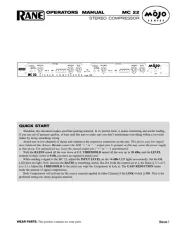
18 Juni 2025
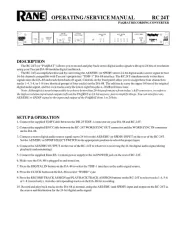
18 Juni 2025
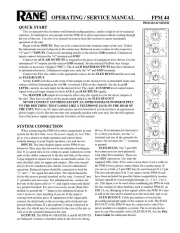
17 Juni 2025
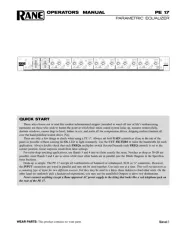
17 Juni 2025
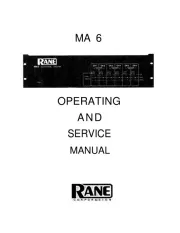
17 Juni 2025
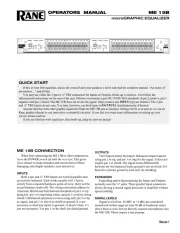
17 Juni 2025
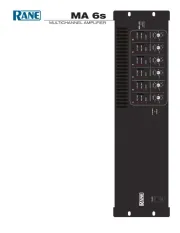
17 Juni 2025
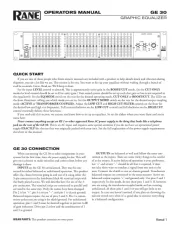
17 Juni 2025
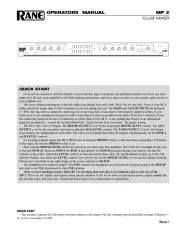
17 Juni 2025
Handleiding Mengpaneel
- Koda
- Flama
- Ashly
- Inter-M
- Bifinett
- Electrolux
- Alto
- Valcom
- Fifine
- Røde
- SPL
- Allen & Heath
- Extron
- Fredenstein
- Kramer
Nieuwste handleidingen voor Mengpaneel
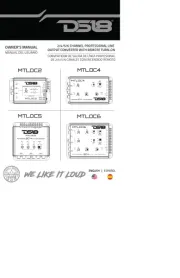
8 September 2025
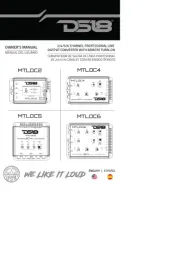
8 September 2025
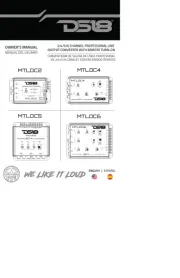
8 September 2025
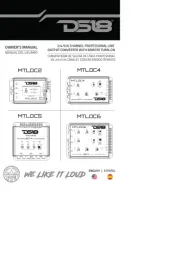
8 September 2025

12 Augustus 2025
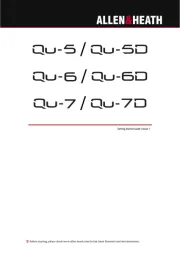
12 Augustus 2025
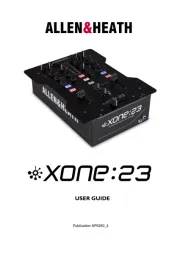
11 Augustus 2025
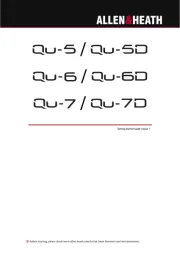
11 Augustus 2025
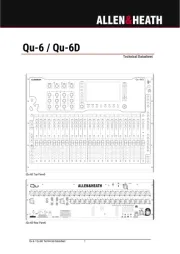
11 Augustus 2025
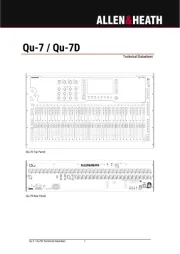
11 Augustus 2025